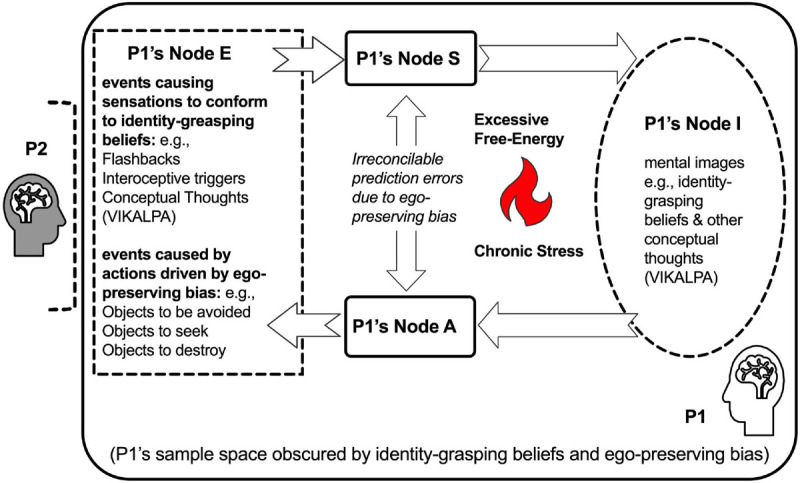FIGURE 2.

Bayesian Engine in a state that identity-grasping beliefs and ego-preserving bias obscure its sampling space. When identity-grasping beliefs and other conceptual thoughts (VIKALPA) “hijack” a person P1’s Node I, these conceptual thoughts explain away prediction errors without attuning to another person P2. The reactions to the events from Node E pre-occupy P1’s Nodes S, A, and I at the expense of actual attunement to P2’s Bayesian Engine, manifesting as an ego-preserving bias. Outwardly, the identity-grasping beliefs in P1’s Node I drive P1’s Node A (escape, aggression, or acquisition) to avoid fear-provoking objects and/or seek distracting or addictive objects with negative reinforcement; Inwardly, the sampling of the events is biased toward covert cues, e.g., trauma-related flashbacks, interoceptive triggers, and conceptual thoughts (VIKALPA) that cause fear, anger, or obsession in P1’s Node S to re-confirm the conceptual thoughts (VIKALPA) in P1’s Node I. In such an obscured state, P1 fails to infer and “see” the other person in the relationship, denoted by the dashed bracket in front of P2. The obscuration of P1’s Bayesian Engine is denoted by the other person P2 who is excluded from P1’s sample space. Due to the conflicts that are not constructively reduced by the obscured Bayesian Engine, excessive free energy ensues and results in chronic stress.
